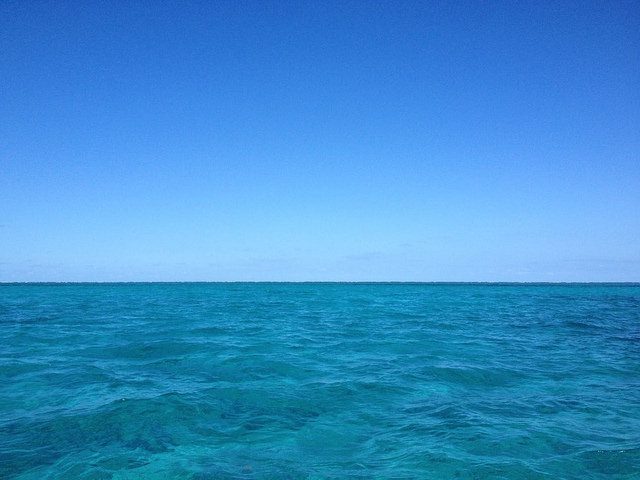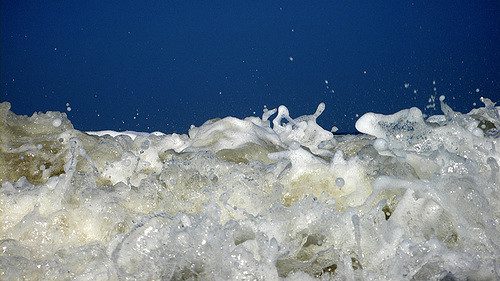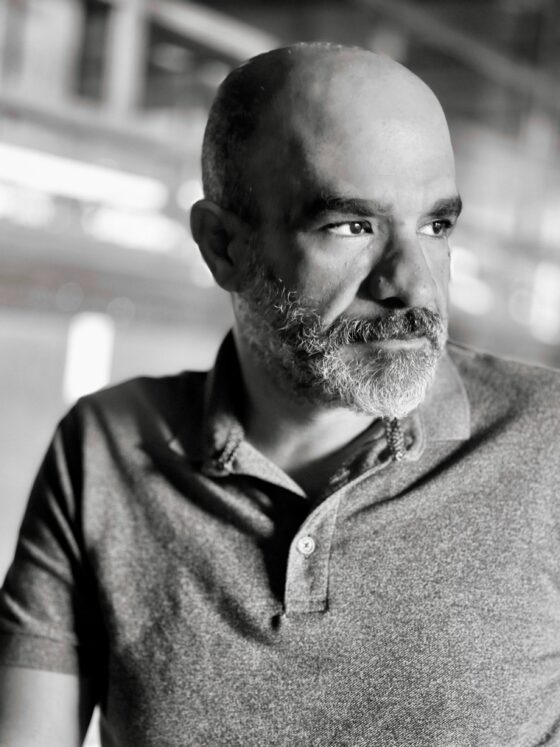
The skin of the earth is seamless
The sea cannot be fenced.
El mar does not stop at the borders.– Gloria Anzaldua
1.
Once I saw a photograph of an arm lying on the ground. It was disconnected from its body of origin and appeared to have been freshly cut off. It was brown in skin-tone and was lying in the mud.
I remember the inside of it—its cross-section—well.
There was pink, which must have been muscle, and white that must have been bone. The color contrast of the bright white, the vibrant pink (salmon, really), and the rich dark brown was so pretty; I’d only seen such cool combination of colors in confections and interior decorating magazines before. At that point, nothing I’d learned about the world had prepared me for understanding what the arm actually was, and so my mind told me it was “pretty colors” before it allowed me to understand that it was actually an appendage and a representation of the very worst of what human beings do to one another on this planet that we inhabit together.
I saw the photograph in the late 1980s in the offices of a place called the Bucks County Peace Center. My Pennsylvania-born friends and I interned there in order to learn activism and social justice. I had been there that day, flipping through a magazine—probably Mother Jones or something—when the arm presented itself in full color with a verbal explanation of it that could’ve made sense to someone else but was lost on me. The caption said something, I believe, about the “unrest in Haiti.”
Okay, I thought, realizing by then what the photo actually was. But what about that arm? What about the ground on which it lay? What about Haiti? My mind was a near-empty vessel on anything that could explain them.
Haiti occasionally entered my awareness through the TV news: a diminutive Black man with big glasses who spoke in rapid French and gestured a lot. Rickety wooden boats on the high seas. The Reagan administration’s proclamations. The US Coast Guard. Deceased people washing up on the Florida shores. Everyone—dead or alive, though—still with their arms. What did I know of these things that would make that picture make sense?
There was no blood in the photo, no traumatized body, and no reason for any of it that I could see. I wondered about it, though. And that wondering became like gravity is to waves; it pulled the answer to me. Detached and tiny bits of information floated to me for assembly into something that made sense: Haiti’s colonial history had a lot to do with that brown arm. I became a student of colonial histories and brown-skinned people, eventually. I became a student intent on reassembling detached narratives and, from there, an educator and artist saying back to other people what I’d learned. Now that I am that writer-teacher, the photograph of the arm comes back into my consciousness fairly frequently. It has retained metaphorical meaning in my mind. The detached arm has come to represent the cultures, histories, and lived experiences of people whose stories are rarely told, where I’m from, and whose stories I collect and retell in my classrooms and my own creative, written work.
My biggest helpers in these efforts are, of course, immigrants and other travelers over the oceans of the world. The ocean carries them and their stories like it carries driftwood and salvageable portions of sunken ships to the shore. Migrating people carry with them the biggest portions of disconnected stories to source-based writers like me. Like the TORCH memoirists did to Rumpus readers, migrating Caribbean people brought me what made that image make sense.
2.
The man in the glasses, it turns out, was Jean Bertrande Aristide. He was a peaceful priest who would lead the revolt against the dictatorship and win the country’s first truly democratic election.
The boats were filled with Haiti’s middle class. According to Aristide’s memoir, they were leaving in droves for someplace better than chaotic Haiti.
The Coast Guard was initially helping them get here, but then began sending them back. The Reagan administration made it policy that Haitian refugees should be turned back before reaching shore.
And the arm represented one of the many things the people were fleeing in the first place—the brutality of the Ton Ton Macoute. That was the army that Francois Duvalier modeled on Hitler’s SS and used to terrify Haitian citizens into submission. (Aristide dismantled it during his first term in office.)
And so these are the initial understandings that I—now a writer whose work often deals with former colonies and the colonial legacy—received from American travelers like Katherine Dunham, from more news sources, and from Aristide himself. Other people, migrating people, brought me the impressions and imparted the essences that painted a fuller picture:
Haitian filmmaker Raoul Peck recalled the type of tyranny that made his family flee: People arrested and imprisoned for opposing or just not supporting the dictatorship. Though Peck’s father was released after imprisonment for trying to unionize farmers, many too many did not return from their capture.
Haitian-American fiction writer Edwidge Danticat recalled recently, in an article for the New Yorker, the racism that greeted the Haitians that did make it here during that regime. Outside their closely knit immigrant communities, they were often met with hatred and fear.
These artists found homes here, in New Jersey and New York. With the stability of a land without dictatorship, with a respite from the poverty and rebellion, they assemble pictures for us of their homeland. Like many who also came and settled here, they assemble mosaics. Complex characters, mixed remembrances, a breadth of experience and outcome. In my work, I always seek the insiders and privilege their stories over those who gaze in from outside.
Outsider narratives on Haiti are often one-sided and pitying and other times racist and cruel. Some people only see the sorrow and look down from above to help.
Others just look down.
(Who can forget Pat Robertson’s charge that Haitians deserved the earthquake for making pacts with the devil? Who can forget the recent debate over Trump referring to the country as a shithole?)
According to Haitian American historian Laurent Dubois, this history is long and flows into the present. US military occupiers of Haiti in the early 20th century labeled Haitians “ape men,” “childlike wards,” and “savages.” Justifying that occupation, the US secretary of state explained that “the African race is devoid of any capacity for political organization and lacks genius for government. Unquestionably, there is a tendency to revert to savagery.” These stereotypes persist throughout history and across so many brown and third-world people, and so the need to debunk them drives my work.
Martiniquais Maryse Conde and Aime Cesaire suggest that it is in history itself that the answers can be found to Caribbean nations’ most perplexing questions—questions about racism, poverty, unfair immigration policies, and seemingly perpetual violence of the sort dramatized by that detached the arm. Colonization set the worst things in motion. I agree and suggest that means history isn’t really in the past. Through Caribbean people who bring or study their histories, then, I come to understand specifics about the present.
What this means: Neither Trump’s comments nor his policies are anything new. Looking back to the past—and across oceans—to bring forward what is useful in understanding it is the Sankofa ethic that guides my work.
My work reminds me, then: The ocean is deep, unfathomably so. And one can stay on the surface or keep on plumbing the depths.
3.
DuBois plumbed the country’s past in order to explain its present. In his Haiti: The Aftershocks of History, published shortly after the 2010 earthquake, the historian laid out before his readers the colonial and neocolonial crimes against the place: The slavery, European and American retaliation against Haitians for securing their own freedom from slavery, the loss of land to foreign capitalists, the puppet presidents, the military occupations, the military conscriptions, the thefts from the treasuries, the exorbitant debts forced upon it by colonizing powers, the embargoes, the strong-arming tactics foreign governments used to get it to drop its protective trade tariffs and change its real estate policies, the foreign support of its dictators, and so much more. These things—homelessness, poverty, slums, starvation, nutrient depleted soil, rampant unemployment—all happened by foreign powers at Haiti’s extreme expense.
The patterns are so similar in each of Haiti’s eras (slavery, colonialism, dictatorship, unstable democracy), that researchers of postcolonialism like myself always look back to understand today. Regular Haitians don’t seem to have to, though. Even their humor lets it be known that first world-ers still have extreme and unfair advantages over the so-called third world. Here’s the joke:
A young couple treated themselves to a meal in an expensive restaurant in Petionville. After eating a huge meal they had settled back in their chairs to relax and chat. The waiter came along and asked: “Will you have American coffee or Haitian coffee?” The woman replied that she’d have American coffee, while the man chose Haitian coffee. The waiter said, “coming right up,” and rushed off. “Ah,” said the woman, this is a fantastic restaurant. The service is so solicitous and they have just everything.” Her date agreed. After a few minutes the waiter returned with two cups, one small demitasse cup and one large coffee cup. He placed the large cup in front of the woman and the small cup in front of the man. Then, with great ceremony, he filled both cups from the same coffee pot!
As Haiti entered the public mind again recently, it did so as this little cup, as that reportedly destroyed place. But it is not humor that characterizes Haiti’s return to the spotlight; it is that perpetual racism and rejection. President Trump’s revocation of Haitian earthquake survivors’ deportation protection and the cold comments about Haiti attributed to him brought Haiti back to the news. The comment stirred up arguments, and the decision will result in sorrow. I am reminded: Oceans are tumultuous. But they also ebb and buoy and holds things up. And Haitians are nothing if not resilient.
4.
Fortunately, migrating people reshape crass narratives like Trump’s in the same way that the ocean reshapes the shoreline. And so whether numbers of Haitian refugees stay or go next year, they will have shaped the understanding of any one who took the time to listen while they were speaking.
All the narratives I’ve heard by their fellow migrants demonstrate one thing: Haiti is complex. (All places are complex, and no place is a shithole.) But yet the outsider narratives of Haiti only seem to focus on the negative, even when one has sympathy for the place: Haiti “has been dysfunctional longer than any other country in the New World,” says humanitarian aid worker Jessica Alexander. “With its long history of bloodshed, disease, oppression, and the ongoing poverty and disenfranchisement of its masses, one might think that the people of Haiti had served their penance for whatever imagined cosmic crime they had committed,” she continues (without any mention of the role that France, Spain, the United States, and the Dominican Republic had in that dysfunction, without any mention of Haitian resilience and determination). But Haiti is a place of “startling contrasts” full of all that is beautiful and all that is brutal, Haitian American writer Roxane Gay reminds us in her debut novel, An Untamed State.
So many Haitian artists capture this contrast of which Gay speaks. (Think Basquiat’s combinations of skulls and bright colors.) Haitian-American hip-hop artist Wyclef Jean emphasized the beauty when he personified Haiti as a beautiful woman and serenaded her in a song. He usually emphasizes the positive of the place, but he does let the fear flow through: Sending Haitian refugees back, Jean says, simply amounts to “sending them back to their death and famine.”
The Haitian aesthetic usually fluctuates between power and pain. Haitian art stares the island’s disasters right in the face but radiates dignity while it does so. “They say human blood enriches soil,” writes Haitian poet Suze Baron:
If that were true
If that were true
My friends
How rice
Millet
and corn
would thrive
in
Haiti.
“You may cut me, slash me throw me,” writes Haitian poet Emmanuel Ejen:
You may burn me
Make charcoal with me
Birds wont stop
To nest in my roots
Hope wont cease
To flower in my heart
I am a poet
My roots have no cell.
Nothing about them resembles shithole or devil. The voices Haiti are powerful, many, and diverse. The ocean is fed by many rivers and streams.
5.
Now, in 2018, which is about thirty years after my career really sort of began with that glimpse of the arm photo, I have long had the answer to the question raised by the detached arm. Thanks to all those migrating Haitians, many of whom became Americans and were willing to tell their stories and explore their pasts that flow into the present, I understand. The thing with slavery and colonization never really ended. Not completely. And even though the arm itself couldn’t be reconnected, through migrating writers, the history behind it can be reattached to the present where it belongs. They aren’t really two distinct things. And to study it all is to be sure: Haiti, and the rest of the developing world, is complex, beautiful, and despairing, and the racists who decry it are what they are: limited in compassion and uninformed.
Next year, the year that the quake survivors’ protection will be revoked and many could be deported, I have a book coming out about severed histories and such things. That year, I will also be launching my web-based education resource about detached narratives and such things. And I wonder: will I be able to reach the close-minded people who fuel prejudices with hateful speech? I wonder if I will make the displaced feel welcomed.
Regardless, I will continue to believe in the wisdom of poets, painters, and dancers—people like that great poet of border crossings, Gloria Anzaldua who implored her readers to strive for “tolerance for ambiguity.” She wrote,
…the borders and walls that are supposed to keep the undesirable ideas out are entrenched habits and patterns of behavior; these habits and patterns are the enemy within. Rigidity means death. Only by remaining flexible [are people] able to stretch the psyche horizontally and vertically.
People like Anzaldua, like Dubois, like Danticat, like the TORCH writers, and maybe like you—with the impetus to travel and the generosity to share their stories—change the landscapes of our minds, then. And so, I will be a part of the current that passes those stories on.
***
TORCH is a monthly series edited by Arielle Bernstein devoted to showcasing personal essays and interviews about immigrant and refugee experiences. You can visit the archives here. This is the final installment of TORCH.
***
Rumpus original logo art by Jyotsna Warikoo Designs. Photographs © Rich Garella.
Rich Garella is a writer, editor, and filmmaker whose writings and photographs have appeared in publications including Mother Jones, Los Angeles magazine and the Cambodia Daily, and as part of campaigns for fair elections, environmental justice and prosecutorial reform, among other topics. A documentary about Cambodia that he produced for public television, Who Killed Chea Vichea?, won a Peabody Award in 2012. He works as a communications consultant, most recently for the successful reform candidacy of Larry Krasner for District Attorney in Philadelphia, where he is based.









